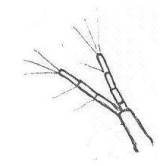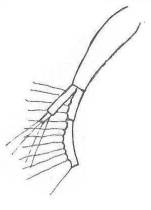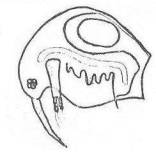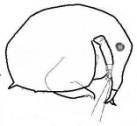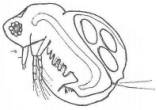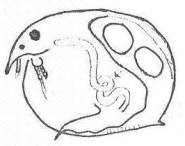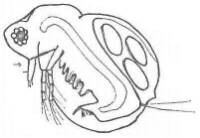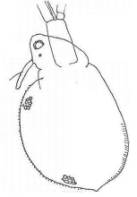Key to the genera and species of Philippine water fleas.
82 a. Second antenna with dorsal branch 3-segmented and
ventral branch 3- or 4-segmented...............................83
82 b. Second antenna with dorsal branch 2-segmented and
ventral branch 3-segmented. Both branches together with
more than 10 setae. 6 pairs of similar legs.
SIDIDA (family), Diaphanosoma..............................88
83 a. First antenna fused with head, forming a snout-like formation.
BOSMINIDAE (family)........................................84
83 b. First antenna not fused with head...............................85
84 a. First antenna not united at base, distal part parallel to each other.
Post abdomen rectangular in shape with oblique anal opening.Bosmina....................................................96
84 b. First antenna united at base and diverging from each other.
Post abdomen cone-like with rounded tipBosminopsis.................................................97
85 a. Both branches of second antenna 3-segmented.
CHYDORIDAE (family), Ephemeroporus(Chydorus)...............98
85 b. One branch of second antenna 3-segmented,
the other 4-segmented..........................................86
86 a. First antenna long, moveable, situated on the ventral side of
the large head.
MOINIDAE (family)..........................................87
86 b. First antenna short, not moveable, head small.
DAPHNIIDAE (family), Ceriodaphnia..........................91
86 c. First antenna long, situated on anterior margin of head.
MACROTRICIDAE..............................................99
87 a. Ocellus eye absent, only compound eye present.
Moina......................................................93
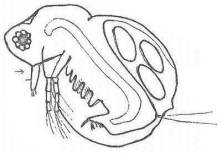
87 b. One ocellus eye and compound eye present.
Moinodaphnia...............................................95
